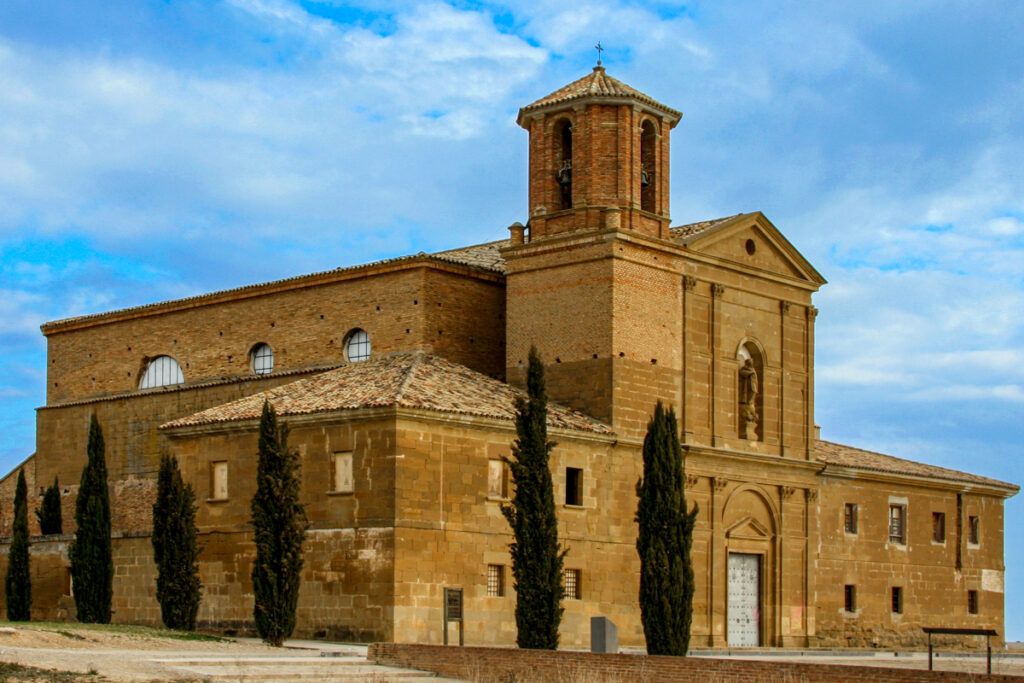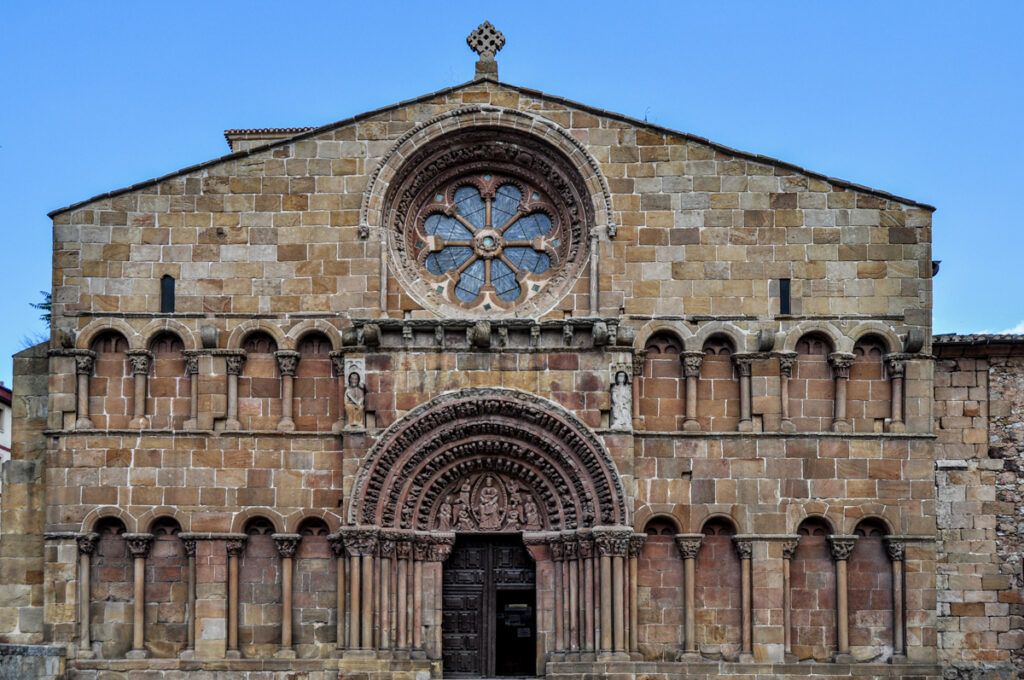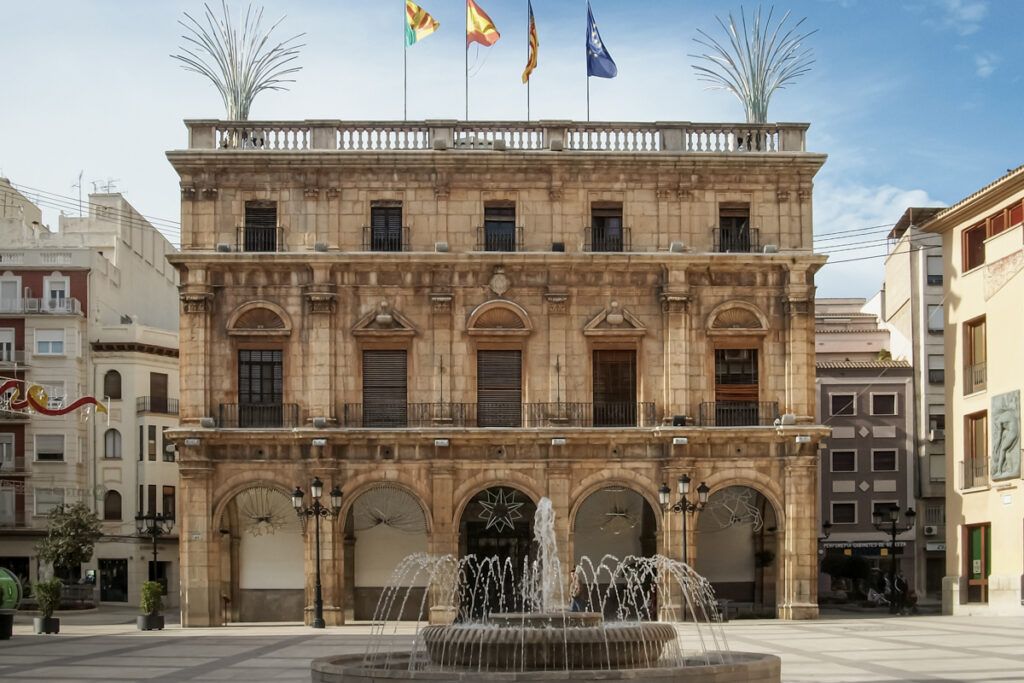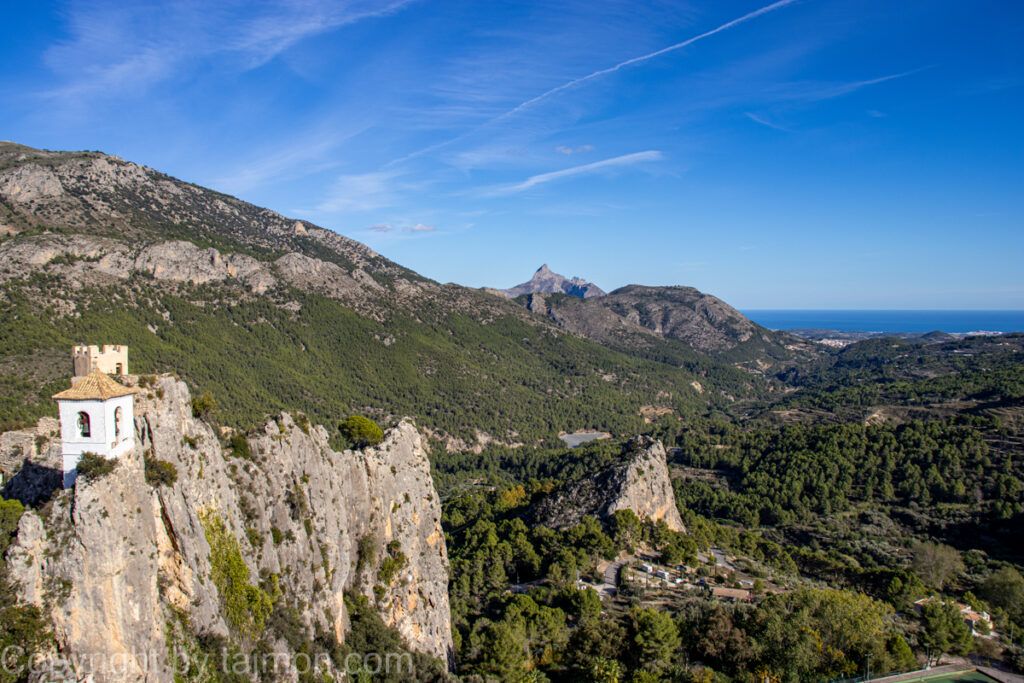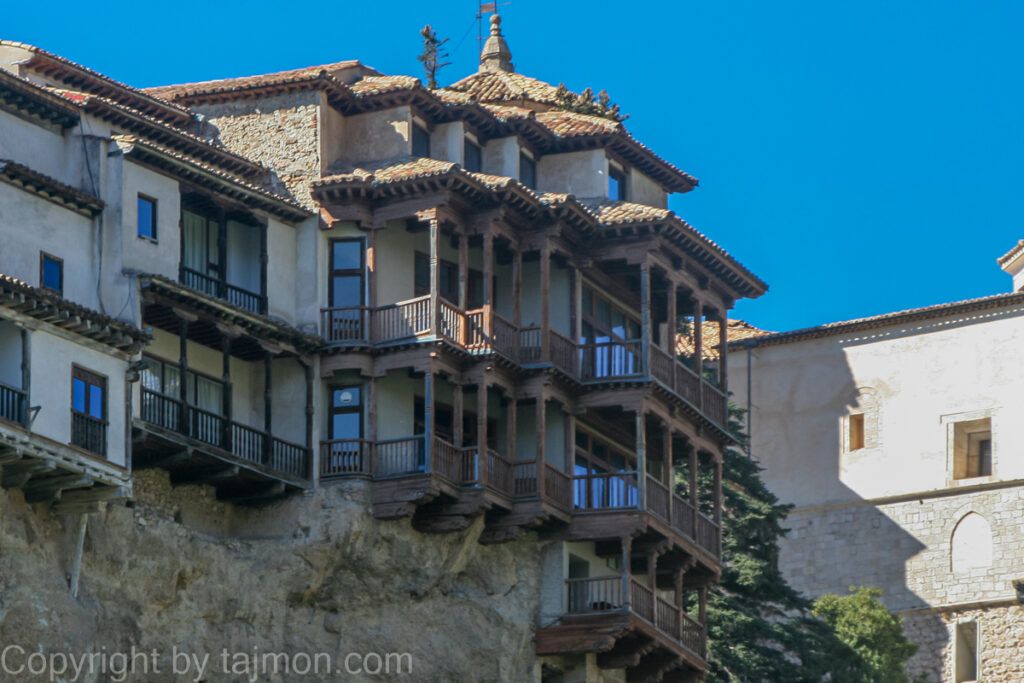Ayuntamiento Histórico
The Ayuntamiento Histórico is the historical seat of the Teruel City Council, which is located on Plaza de la Catedral, opposite the cathedral. It was built between 1555 and 1565 by architect Martín de Montalbán, with the intention of creating a new and representative building for the city authorities. The Ayuntamiento Histórico is recognized as a Cultural Heritage (Bien de Interés Cultural) in the Monument category and is one of the most important monuments of historical and cultural significance in Teruel.
The Ayuntamiento Histórico is a Renaissance building, built of stone and brick. Its facade is divided into three levels, each of which has a different character and decoration. The first level is the lowest and simplest, and serves as a base for the others. On this level, there are three entrances, of which the middle one is the largest and most decorative, with a semicircular arch and the city’s coat of arms.
The second level is the highest and most complex, and serves a representative and ceremonial function. On this level, there are three large windows, of which the middle one is the largest and most decorative, with a semicircular arch and a balcony. Above the windows, there are bas-reliefs depicting scenes from the city’s history, such as the founding of Teruel, the Battle of Muret, or the granting of fuero.
The third level is intermediate and serves a connecting and decorative function. On this level, there are three small windows, of which the middle one is the largest and most decorative, with a semicircular arch and the royal coat of arms. Above the windows, there are friezes with geometric and plant motifs, typical of Mudéjar art.
The interior of the building is divided into various rooms, such as the plenary hall, session room, protocol room, or archive room. In these rooms, you can admire antique furniture, paintings, sculptures, and documents that testify to the history and culture of the city.
Among them, it is worth mentioning the painting of the Virgin Mary with the Child, the work of Juan García Martínez, the sculpture of St. George, the patron saint of the city, the work of Aniceto Marinas, or documents related to the fuero, a legal and tax privilege granted to the city by King Alfonso II in 1176.

